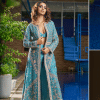One lazy afternoon in the office, I stumbled upon a reel (for research purposes) that claimed, "If it weren't for the military, we'd all be naked!" Curious as ever, I started a deep dive into the fascinating connection between military attire and modern fashion. It turns out much of what we casually throw on every morning, whether we're heading to the office or hitting the streets, was once born out of necessity on battlefields or military bases.
From corporate suits to rugged streetwear, the influence of military attire is everywhere. This connection was hiding in plain sight, especially for those of us Dhakaites juggling work commutes, the relentless heat, and the ever-changing urban landscape. But how did uniforms and military innovation come to define so many fashion staples?
The uniforms we wear without knowing
Starting with the most basic item, let's talk about T-shirts. In 1913, the US Navy began to offer it as undergarments before it became a popular choice for leisure wear because long john/long underwear took an entire business day to put on. Originally worn beneath uniforms, sailors chose to wear simply the shirt when they moved to warmer areas. This decision laid the groundwork for casual style.
The bomber jacket (yes, the one you get from Doja or Nurjahan market), was designed to keep pilots warm in their open cockpits during World War I, and has also had an impact on street fashion and haute couture. Whether it's for a catwalk show in Paris or a cold evening in Dhaka, the bomber jacket has never gone out of style.
The cardigan, a cosy knit that we frequently wear in Dhaka's cooler months when the weather gets a little too chilly, actually has a military history. Named after James Thomas Brudenell, the Earl of Cardigan, this jumper was initially worn by his officers during the Crimean War, and although it was originally intended only for warmth and practicality, it eventually became a symbol of military prestige.
But let's not forget the beloved trench coat. I've always imagined it as the garment of detectives in old noir films, but it was originally designed for British soldiers fighting in the trenches of World War I. Its double-breasted design and water-resistant fabric made it ideal for harsh weather conditions.
Corporate to casual: Dressing up for work
The modern suit evolved from the sharply tailored outfits worn by Napoleon's soldiers, designed to project authority and discipline. Even the Derby shoe, a common part of formal wear, can trace its roots back to the Prussian army. Little did we know that our office attire was making us feel like we were ready to lead troops rather than just tackle another Monday meeting.
The khaki pants that became office staples for many were originally developed by British soldiers during their colonial occupation of India. The dusty tones of khaki were meant for camouflage, but today, they blend effortlessly into business casual looks. What started as a survival tool is now just as likely to be seen on a spreadsheet warrior as a soldier in the field.
Accessories with a military past
Even something as small as aviator sunglasses has a military history. Designed for US pilots to shield their eyes from the glaring sun, they are now a ubiquitous part of summer style.
And the wristwatch? Before the World Wars, it was considered a feminine accessory, but soldiers quickly realised they needed something more practical than pocket watches (too many were getting shot while taking out their pocket watches from their vests). Now, whether you are tracking time on a Zoom call or a weekend trek, you are wearing a tool that helped soldiers manage their missions.
The practical influence on streetwear
It all comes back to the military if you are asking why bomber jackets, tough boots, and cargo trousers are essential pieces of urban apparel. These pieces fit with streetwear so well because they were made to last and have a purpose. The parka, for instance, was designed by the US Army to keep soldiers warm in freezing temperatures during the Korean War. Now, it's the jacket of choice for those cold, foggy Dhaka winter mornings.
Even combat boots have made their way into our wardrobes, from military trenches to fashion runways. Their robust design has proven to be just as popular with fashion enthusiasts as with soldiers.
Fashion has changed from the battlefield to the catwalk, much as we have adapted to the difficulties of city living. This serves as a reminder that often the most sensible answers also happen to be the most stylish. So, next time you are pulling on your T-shirt or lacing up your boots, remember — you are not just getting dressed. You are donning a fragment of history.













Comments